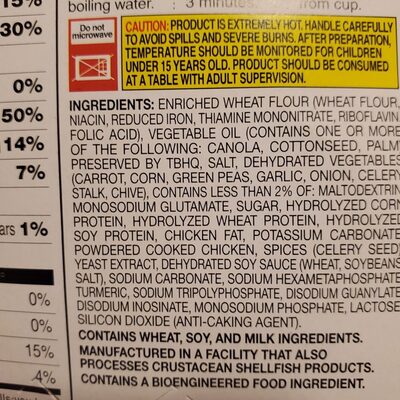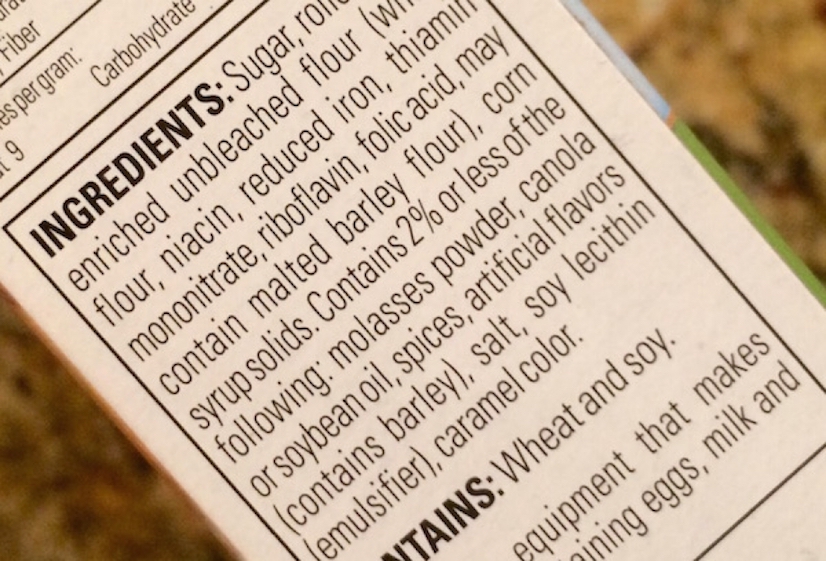“Part 8: Uncovering What’s Really in Your Food.”

Welcome back to the ‘Nutrition Labels Matter’ series! Today, we’re wrapping up with one of the most important parts of the nutrition label—the ingredients list. This often-overlooked section of the label tells you exactly what’s in your food, from the main ingredients to the additives and preservatives. Understanding how to read the ingredients list can help you make more informed decisions about what you’re putting into your body. Let’s dive in and uncover what’s really in your food.
What is the Ingredients List?

The ingredients list on a food label provides a detailed breakdown of every ingredient that goes into making the product. Ingredients are listed in order of quantity, from highest to lowest. This means that the first ingredient on the list is what the product contains the most of, and the last ingredient is what it contains the least of.
Why the Ingredients List Matters:
While the nutrition facts label gives you a broad overview of the nutrients in your food, the ingredients list provides the specifics. This list can help you:
• Identify Hidden Sugars: Sugars often go by many names—high fructose corn syrup, cane sugar, dextrose, and more. The ingredients list helps you spot these hidden sugars.
• Avoid Allergens: If you have food allergies or intolerances, the ingredients list is your go-to for spotting potential allergens.
• Understand Additives and Preservatives: The list also includes any additives or preservatives used in the product, which can be important if you’re trying to avoid certain chemicals or artificial ingredients.
How to Read the Ingredients List:

Here’s how to navigate the ingredients list on your food labels:
1. Check the First Few Ingredients: The first three ingredients often make up the bulk of the product, so make sure they align with your health goals. For example, if you’re looking for a whole grain product, make sure a whole grain is listed as one of the first ingredients.
2. Spot Hidden Sugars: Look out for different names for sugars. Ingredients like sucrose, glucose, fructose, and corn syrup are all forms of sugar.
3. Be Aware of Additives: Additives are often listed toward the end of the ingredients list. These might include preservatives, colorings, and flavorings. If you’re trying to avoid processed foods, look for short ingredient lists with recognizable, natural ingredients.
4. Identify Allergens: Common allergens like nuts, dairy, and soy are usually highlighted on the ingredients list. If you have an allergy, make sure to double-check this section.
Common Ingredients to Watch Out For:
• Artificial Sweeteners: Such as aspartame or sucralose, which are used in diet and sugar-free products.
• Trans Fats: Often listed as partially hydrogenated oils, these should be avoided as much as possible.
• Artificial Colors: Like Red 40 or Yellow 5, which are synthetic dyes used to enhance the color of foods.
• Preservatives: Such as sodium benzoate or BHA, which are used to extend shelf life but can have negative health effects.
Tips for Choosing Products Based on the Ingredients List:
• Look for Whole Foods: Choose products with simple, recognizable ingredients. The fewer ingredients, the better.
• Be Cautious with Health Claims: Just because a product claims to be “natural” or “organic” doesn’t mean it’s free of added sugars, artificial ingredients, or preservatives. Always check the ingredients list.
• Balance Your Diet: Use the ingredients list to help you choose foods that contribute to a balanced diet. For example, if you’re aiming for a low-sodium diet, look for products with no added salt or sodium.
The ingredients list is a powerful tool for understanding what’s really in your food. By taking the time to read and understand this list, you can make more informed decisions, avoid unwanted ingredients, and choose foods that support your health goals. Remember, the best choices are often the simplest ones—so stick to products with short, recognizable ingredient lists whenever possible.
Got Questions
Got questions about reading the ingredients list or how to make healthier choices? Drop them in the comments below or send me a message—I’m here to help! And if you found this helpful, share it with someone who could use a little help decoding their food labels.

